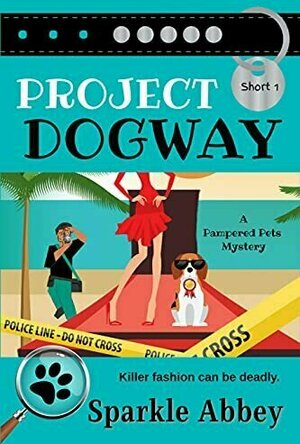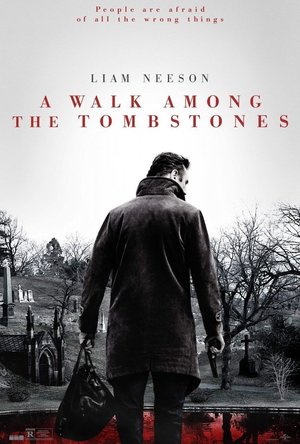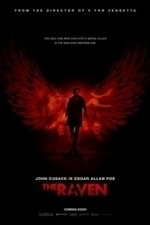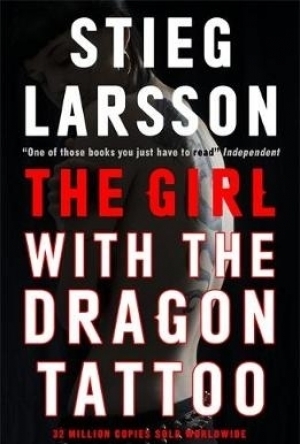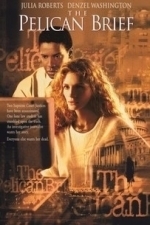Search
Search results
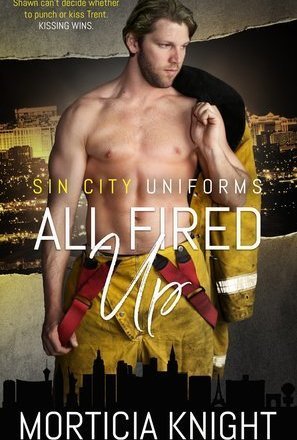
All Fired Up (Sin City Uniforms #1)
Book
Shawn can’t decide whether he wants to punch or kiss Trent. Kissing wins. The party never ends...
Contemporary M_M Romance Mystery Crime
Hazel (2934 KP) rated The Dinner Lady Detectives in Books
Oct 24, 2021
This is, in my humble opinion, a very successful debut and definitely a series that I am looking forward to keeping up with. It is described as "a delightful, quintessentially British cosy mystery" and that's exactly what you get.
Margery and Clementine are dinner ladies, or to give them their official title 'Education Centre Nourishment Consultants' (really? is that what they're called now?!?!?!), and they are an absolute blast. Their relationship absolutely shines through from start to finish, it's beautiful and very authentic feeling.
Margery and Clementine smell a rat when one of their colleagues is found dead in the walk-in freezer of the school kitchen and so begins their unorthodox investigation into her death which results in all manner of escapades. There are some very funny moments (the suspended school ceiling being a particular highlight for me 🤣🤣) amongst a great and engaging plot with excellent characters throughout.
I raced through this book desperate to find out what happened and how it was all going to come together and I wasn't disappointed in the slightest and I am pleased to read on the publisher website that they have acquired the rights to a three-book deal. I think someone needs to snap this up and make a television series - I can so see Dawn French and Jennifer Saunders as Margery and Clem, in fact, that's who I was seeing in my head as I was reading it!
Highly recommended for those of you who want a break from all the doom, gloom and violence in many crime fiction books and who don't mind a bit of dark humour.
Thank you so much Canelo and NetGalley for my advance copy in return for an honest, unbiased and unedited review.
Margery and Clementine are dinner ladies, or to give them their official title 'Education Centre Nourishment Consultants' (really? is that what they're called now?!?!?!), and they are an absolute blast. Their relationship absolutely shines through from start to finish, it's beautiful and very authentic feeling.
Margery and Clementine smell a rat when one of their colleagues is found dead in the walk-in freezer of the school kitchen and so begins their unorthodox investigation into her death which results in all manner of escapades. There are some very funny moments (the suspended school ceiling being a particular highlight for me 🤣🤣) amongst a great and engaging plot with excellent characters throughout.
I raced through this book desperate to find out what happened and how it was all going to come together and I wasn't disappointed in the slightest and I am pleased to read on the publisher website that they have acquired the rights to a three-book deal. I think someone needs to snap this up and make a television series - I can so see Dawn French and Jennifer Saunders as Margery and Clem, in fact, that's who I was seeing in my head as I was reading it!
Highly recommended for those of you who want a break from all the doom, gloom and violence in many crime fiction books and who don't mind a bit of dark humour.
Thank you so much Canelo and NetGalley for my advance copy in return for an honest, unbiased and unedited review.
Hazel (2934 KP) rated Lost Graves (Boyle & Keneally #2) [Audiobook] in Books
Feb 6, 2022
I am always a bit wary of joining a new series without having read at least the first book however, I needn't have worried because this really works as a standalone and I am now hooked and eagerly awaiting the next instalment.
What we have here is a great story that mixes crime, mystery, serial killer, police procedural with Irish folklore, the supernatural, the travelling community and shady military operations. Now, you might think that's a lot and whilst it is, S.A. Dunphy brings it all together seamlessly and effortlessly.
A mass grave is found in Derrada Woods and the National Bureau of Criminal Investigations Team are sent in to investigate; made up of Jessie, Seamus, Terri and Dawn, they are definitely a team not to be messed with and they quickly recognise the local police have the wrong man.
The ensuing investigation is full of twists and turns with plenty of action and suspense all written at a great pace. With short chapters, this is one of those books that have you thinking you can mange 'just one more chapter before bed' but before you know it, another hour has gone by ... you just get drawn in and it's hard to tear yourself away.
I listened to the audiobook and was completely absorbed by the narration done by Shelley Atkinson; her soft Irish tone really brought the characters to life and the subtle changes she made in order to make the different characters distinguishable was perfect.
Overall, a great 'listen' and I will definitely be looking out for the next in this enthralling series and my thanks must go to Bookouture and NetGalley for my copy in return for an honest, unbiased and unedited review.
What we have here is a great story that mixes crime, mystery, serial killer, police procedural with Irish folklore, the supernatural, the travelling community and shady military operations. Now, you might think that's a lot and whilst it is, S.A. Dunphy brings it all together seamlessly and effortlessly.
A mass grave is found in Derrada Woods and the National Bureau of Criminal Investigations Team are sent in to investigate; made up of Jessie, Seamus, Terri and Dawn, they are definitely a team not to be messed with and they quickly recognise the local police have the wrong man.
The ensuing investigation is full of twists and turns with plenty of action and suspense all written at a great pace. With short chapters, this is one of those books that have you thinking you can mange 'just one more chapter before bed' but before you know it, another hour has gone by ... you just get drawn in and it's hard to tear yourself away.
I listened to the audiobook and was completely absorbed by the narration done by Shelley Atkinson; her soft Irish tone really brought the characters to life and the subtle changes she made in order to make the different characters distinguishable was perfect.
Overall, a great 'listen' and I will definitely be looking out for the next in this enthralling series and my thanks must go to Bookouture and NetGalley for my copy in return for an honest, unbiased and unedited review.
Mark @ Carstairs Considers (2460 KP) rated Project Dogway in Books
Jan 2, 2022
Dogging a Killer
Cousins Caro Lamont and Mel Langston are both in attendance at a dog fashion show fundraiser to help raise awareness for heartworm (in dogs, that is). Mel’s boutique is providing fashion for the dogs that are walking the catwalk, er dogwalk, for the show. However, the show ends early when Phil Tawney drops dead after eating some shellfish. While Caro searches for Phil’s missing award-winning beagle, Mel attempts to comfort the not quite grieving almost ex-wife. Will they wind up gathering the clues needed to catch the killer?
As a fan of this series, I was delighted to see the characters return, even if only in a short story. Caro and Mel and still feuding here, so we get the story told in short chapters to make it easier to switch between the cousins as the focal point of the story. The authors do a great job of giving us clues without repeating themselves so that both cousins can solve the crime. We don’t see many of the series regulars, but we had to have time for new characters and the plot in this short story. The mystery is well thought out with a logical solution. We also get the fun of the over-the-top world these books brought to life. Make no mistake, this is a short story I read in about 45 minutes, but as long as you keep that in mind, you’ll be fine. As a series fan, it was fun to revisit the characters. If you are new to the series, it might be a good way to meet the characters. You’ll be hooked and looking for the first book before you know it.
As a fan of this series, I was delighted to see the characters return, even if only in a short story. Caro and Mel and still feuding here, so we get the story told in short chapters to make it easier to switch between the cousins as the focal point of the story. The authors do a great job of giving us clues without repeating themselves so that both cousins can solve the crime. We don’t see many of the series regulars, but we had to have time for new characters and the plot in this short story. The mystery is well thought out with a logical solution. We also get the fun of the over-the-top world these books brought to life. Make no mistake, this is a short story I read in about 45 minutes, but as long as you keep that in mind, you’ll be fine. As a series fan, it was fun to revisit the characters. If you are new to the series, it might be a good way to meet the characters. You’ll be hooked and looking for the first book before you know it.

The Whisper Legacy (Pappa Legacy #1)
Book
Curran’s enemies thought he was dead. They were wrong. He thought his past was left on the Voula...
Political Thriller Action Detective Mystery
Darren (1599 KP) rated A Walk Among the Tombstones (2014) in Movies
Jun 20, 2019
Story: A Walk Among the Tombstones starts by in 1991 we meet Matt Scudder (Neeson) a nonsense detective who while having his morning Irish coffee ends up going into a shootout. Flash forward to 1999 Matt is now a private investigator and when a former junkie Peter Kristo (Holbrook) invites him to meet his brother Kenny (Stevens) for a job. Kenny’s wife was kidnapped with the ransom paid and murdered; he wants Matt to bring him the names of the people responsible. Matt rejects the offer wisely because it would involving working with a drug trafficker but Kenny won’t take no for an answer.
Kenny tales the story of what happened and how gruesome the murder was, this brings Matt into the case to track down the people responsible. Using all his skills he starts the investigation by questioning the locals. The killers prove to be professionals who cover their tracks when committing their crimes. When it becomes apparent they have been doing this for years Matt finds himself investigating cold cases. Tracking down the leads he does come up with a potential name and a place he could meet them, but nothing could prepare him for the nature of the men.
A Walk Among the Tombstones starts very nicely with the broken protagonist trying to make up for something he could never actually make up for, it is hidden from us but we do see he has personal problems. The whole drug dealers being targeting by serial killers also works nicely, giving us a chance to keep guessing on whether it is actually a large scale revenge type thriller than Matt is stuck in the middle off. It goes downhill slowly because of the pace and then turning it into the simple idea that they are just two killers doing it for fun. It is sad because this had a lot of potential from the start but in the end just fizzles out. (6/10)
Actor Review
Liam Neeson: Matt Scudder a private detective who against his better judgment ends up investigating serial killers who enjoy nothing more than kidnapping and killing their victim even if they get their money. He is a former detective who has been recovering from his alcoholism which cost him his job. Liam does do a good job in the role and goes away from the new action star he has created. (7/10)
matt
Dan Stevens: Kenny Kristo drug trafficker whose wife was killed and hires Matt to find the people responsible for it, it will mean risking his connection to help expose the truth. Dan does a good job as the mobster out for revenge for a crime that is personal rather than work related. (7/10)
kenny
Support Cast: A Walk Among the Tombstones has a supporting cast that includes the two killers who are very much evil in what they do, we have other mobsters who are the victims of those killers and we also have a street wise kid trying to help Mark out. They all help the story flow along very well.
Director Review: Scott Frank – Scott does a solid job directing this to make it an interesting thriller with a very dark side to it. (6/10)
Crime: A Walk Among the Tombstones enters into the crime world without going too far over the top with its double crossing, instead focusing on one angle the whole way through. (7/10)
Mystery: A Walk Among the Tombstones does keep you guessing to what would be the motives of the characters creating a nice mystery about the story. (8/10)
Thriller: A Walk Among the Tombstones starts off pulling you in especially when you hear about the murdered wife but afterwards slight starts to fade away. (7/10)
Settings: A Walk Among the Tombstones creates a world that is similar to 1999 New York. (7/10)
Suggestion: A Walk Among the Tombstones is one to try and the fans of Neeson will be watching this, it might not keep everyone happy because it isn’t as dark as its source material. (Try It)
Best Part: The shock of what Kenny finds in the boot of that car.
Worst Part: Falls away by the end.
Believability: No (0/10)
Chances of Tears: No (0/10)
Chances of Sequel: No
Post Credits Scene: No
Similar Too: Cold in July
Oscar Chances: No
Box Office: $53 Million
Budget: $28 Million
Runtime: 1 Hour 54 Minutes
Tagline: People are afraid of all the wrong things.
Overall: A Thriller That Hits Hard Early but Tires Near the End
https://moviesreview101.com/2015/01/26/a-walk-among-the-tombstones-2014/
Kenny tales the story of what happened and how gruesome the murder was, this brings Matt into the case to track down the people responsible. Using all his skills he starts the investigation by questioning the locals. The killers prove to be professionals who cover their tracks when committing their crimes. When it becomes apparent they have been doing this for years Matt finds himself investigating cold cases. Tracking down the leads he does come up with a potential name and a place he could meet them, but nothing could prepare him for the nature of the men.
A Walk Among the Tombstones starts very nicely with the broken protagonist trying to make up for something he could never actually make up for, it is hidden from us but we do see he has personal problems. The whole drug dealers being targeting by serial killers also works nicely, giving us a chance to keep guessing on whether it is actually a large scale revenge type thriller than Matt is stuck in the middle off. It goes downhill slowly because of the pace and then turning it into the simple idea that they are just two killers doing it for fun. It is sad because this had a lot of potential from the start but in the end just fizzles out. (6/10)
Actor Review
Liam Neeson: Matt Scudder a private detective who against his better judgment ends up investigating serial killers who enjoy nothing more than kidnapping and killing their victim even if they get their money. He is a former detective who has been recovering from his alcoholism which cost him his job. Liam does do a good job in the role and goes away from the new action star he has created. (7/10)
matt
Dan Stevens: Kenny Kristo drug trafficker whose wife was killed and hires Matt to find the people responsible for it, it will mean risking his connection to help expose the truth. Dan does a good job as the mobster out for revenge for a crime that is personal rather than work related. (7/10)
kenny
Support Cast: A Walk Among the Tombstones has a supporting cast that includes the two killers who are very much evil in what they do, we have other mobsters who are the victims of those killers and we also have a street wise kid trying to help Mark out. They all help the story flow along very well.
Director Review: Scott Frank – Scott does a solid job directing this to make it an interesting thriller with a very dark side to it. (6/10)
Crime: A Walk Among the Tombstones enters into the crime world without going too far over the top with its double crossing, instead focusing on one angle the whole way through. (7/10)
Mystery: A Walk Among the Tombstones does keep you guessing to what would be the motives of the characters creating a nice mystery about the story. (8/10)
Thriller: A Walk Among the Tombstones starts off pulling you in especially when you hear about the murdered wife but afterwards slight starts to fade away. (7/10)
Settings: A Walk Among the Tombstones creates a world that is similar to 1999 New York. (7/10)
Suggestion: A Walk Among the Tombstones is one to try and the fans of Neeson will be watching this, it might not keep everyone happy because it isn’t as dark as its source material. (Try It)
Best Part: The shock of what Kenny finds in the boot of that car.
Worst Part: Falls away by the end.
Believability: No (0/10)
Chances of Tears: No (0/10)
Chances of Sequel: No
Post Credits Scene: No
Similar Too: Cold in July
Oscar Chances: No
Box Office: $53 Million
Budget: $28 Million
Runtime: 1 Hour 54 Minutes
Tagline: People are afraid of all the wrong things.
Overall: A Thriller That Hits Hard Early but Tires Near the End
https://moviesreview101.com/2015/01/26/a-walk-among-the-tombstones-2014/
Connor Sheffield (293 KP) rated The Raven (2012) in Movies
Apr 27, 2017
A brilliant crime thriller (4 more)
Gory
Connections to the work of Edgar Allan Poe
Great Cast
Watchable over and over again
Would love to know what happens in the end (1 more)
Not as exhilirating after the first watch
Quote the Raven, Nevermore.
First of all let me say this;
I am a poet and a writer, and my biggest inspiration as a writer has always been Edgar Allan Poe. I love the gothic horror, the tragedy, the macabre, and everything that makes Edgar Allan Poe the legend he is today.
With that said, let me tell you why I love this movie. It involves connections to some of Poe's greatest work, and not his poetry necessarily, it's actually more about his stories. Telltale Heart, Pit and the Pendulum and others that are all combined into the twisted mind of our antagonist who uses these stories to commit his crimes and leave evidence behind that only Poe himself would be able to figure out.
It's a brilliant crime thriller that delves into the mind of someone who is essentially Poe's biggest fan, but in a very dark and twisted way that gives us a fictional story about what happened during Poe's last days before he was found dead on a park bench. It's a known fact that Poe's last days remain a mystery and so this film had the opportunity to really play with some great ideas and they were executed brilliantly.
Speaking of execution this film is very grim and gory. One scene involving the story of The Pit and the Pendulum has us watch as a Pendulum drops lower and lower before slicing through a man's stomach like a warm knife through butter. It doesn't leave a lot to the imagination which gives this film some charm and makes it stand out from the rest of the Poe Film adaptations.
John Cusack plays the lengend himself, Edgar Allan Poe and brings a very interesting performance, that seems to suggest Poe thought himself as a higher intelligence to those around him, and he isn't shy to announce it.
Sharing the screen with Cusack, includes names such as Luke Evans who portrays Detective Fields, the detective I mentioned earlier that seeks Poe's assistance in the murder case. Brendan Gleeson portrays a very protective father named Charles Hamilton, who despises Poe being anywhere near his daughter Emily Hamilton, portrayed by Alice Eve. However there differences are put aside as the hunt for the missing Emily continues.
The story transitions well from scene to scene and story to story as each clue leads to the next, and eventually we discover the culprit who I shall not name here because I wish to leave the tension and suspense for you as you watch this film.
I am a poet and a writer, and my biggest inspiration as a writer has always been Edgar Allan Poe. I love the gothic horror, the tragedy, the macabre, and everything that makes Edgar Allan Poe the legend he is today.
With that said, let me tell you why I love this movie. It involves connections to some of Poe's greatest work, and not his poetry necessarily, it's actually more about his stories. Telltale Heart, Pit and the Pendulum and others that are all combined into the twisted mind of our antagonist who uses these stories to commit his crimes and leave evidence behind that only Poe himself would be able to figure out.
It's a brilliant crime thriller that delves into the mind of someone who is essentially Poe's biggest fan, but in a very dark and twisted way that gives us a fictional story about what happened during Poe's last days before he was found dead on a park bench. It's a known fact that Poe's last days remain a mystery and so this film had the opportunity to really play with some great ideas and they were executed brilliantly.
Speaking of execution this film is very grim and gory. One scene involving the story of The Pit and the Pendulum has us watch as a Pendulum drops lower and lower before slicing through a man's stomach like a warm knife through butter. It doesn't leave a lot to the imagination which gives this film some charm and makes it stand out from the rest of the Poe Film adaptations.
John Cusack plays the lengend himself, Edgar Allan Poe and brings a very interesting performance, that seems to suggest Poe thought himself as a higher intelligence to those around him, and he isn't shy to announce it.
Sharing the screen with Cusack, includes names such as Luke Evans who portrays Detective Fields, the detective I mentioned earlier that seeks Poe's assistance in the murder case. Brendan Gleeson portrays a very protective father named Charles Hamilton, who despises Poe being anywhere near his daughter Emily Hamilton, portrayed by Alice Eve. However there differences are put aside as the hunt for the missing Emily continues.
The story transitions well from scene to scene and story to story as each clue leads to the next, and eventually we discover the culprit who I shall not name here because I wish to leave the tension and suspense for you as you watch this film.
Eleanor Luhar (47 KP) rated The Girl with the Dragon Tattoo in Books
Jun 24, 2019
I've finally finished it! Whoop whoop!
This is a very different book to what I usually read. It contains a lot of strong language, sexual references, assault and Swedish finance. It also has a lot of investigating, which was my favourite part.
A financial journalist, Mikael Blomkvist, has been accused of libel after submitting a report about a rival company, owned by Hans-Erik Wennerström. The Wennerström Affair is huge - and has earned Blomkvist a three month stay in prison. This was all a bit hard for me to follow, as I don't know much about this subject. But I still managed to get the general gist of it.
A freelance worker at Milton Security is hired to research Mikael Blomkvist. Her name is Lisbeth Salander, and she's only in her twenties. Even so, she's probably the best worker Dragan Armansky has hired.
The client wanting a report on Blomkvist, Herr Frode, works for Henrik Vanger of the massive Vanger Corporation. Pleased with what they hear, they hire the journalist for a private matter - to solve the mystery of a missing girl from the 1960's.
While Blomkvist is researching the suspected crime, Lisbeth Salander is molested and raped by her legal guardian. She should turn him into the police, but that isn't her style. Instead, she gets her revenge.
Blomkvist finds out about the report written on him, and seeks out Salander. Together they begin to crack the case of Harriet Vanger. They are both put at risk when they discover the reason for Harriet's disappearance, and nobody's prepared for what they uncover.
Although the case is solved, the company Blomkvist works for - Millenium - needs revenge against Wennerström. To his surprise, Salander has just what he needs to really make a bang.
Like I said, this is quite an explicit novel - fathers raping their children, guardians attacking vulnerable young women, men sleeping with multiple women. The relationships seem to be ever-changing in this novel, but I suppose that's just realistic. But this is definitely not suitable for the faint-hearted, and there are some really horrific, visual descriptions that really will haunt you.
But if you like investigative or crime novels, I would definitely suggest giving it a go. It's not a quick read by any means, but it's cunning, it's realistic, and it's gripping. What more could you want from a novel of this genre? I really wasn't sure at first, as I just couldn't get into the multiple characters' stories or the whole situation with Mikael Blomkvist, but I did manage to get into the rhythm of it in the end, and really did enjoy it. For these reasons, I'm going to give Larsson's novel 4 stars. I'm seriously hoping I come across the next books in the series now!
This is a very different book to what I usually read. It contains a lot of strong language, sexual references, assault and Swedish finance. It also has a lot of investigating, which was my favourite part.
A financial journalist, Mikael Blomkvist, has been accused of libel after submitting a report about a rival company, owned by Hans-Erik Wennerström. The Wennerström Affair is huge - and has earned Blomkvist a three month stay in prison. This was all a bit hard for me to follow, as I don't know much about this subject. But I still managed to get the general gist of it.
A freelance worker at Milton Security is hired to research Mikael Blomkvist. Her name is Lisbeth Salander, and she's only in her twenties. Even so, she's probably the best worker Dragan Armansky has hired.
The client wanting a report on Blomkvist, Herr Frode, works for Henrik Vanger of the massive Vanger Corporation. Pleased with what they hear, they hire the journalist for a private matter - to solve the mystery of a missing girl from the 1960's.
While Blomkvist is researching the suspected crime, Lisbeth Salander is molested and raped by her legal guardian. She should turn him into the police, but that isn't her style. Instead, she gets her revenge.
Blomkvist finds out about the report written on him, and seeks out Salander. Together they begin to crack the case of Harriet Vanger. They are both put at risk when they discover the reason for Harriet's disappearance, and nobody's prepared for what they uncover.
Although the case is solved, the company Blomkvist works for - Millenium - needs revenge against Wennerström. To his surprise, Salander has just what he needs to really make a bang.
Like I said, this is quite an explicit novel - fathers raping their children, guardians attacking vulnerable young women, men sleeping with multiple women. The relationships seem to be ever-changing in this novel, but I suppose that's just realistic. But this is definitely not suitable for the faint-hearted, and there are some really horrific, visual descriptions that really will haunt you.
But if you like investigative or crime novels, I would definitely suggest giving it a go. It's not a quick read by any means, but it's cunning, it's realistic, and it's gripping. What more could you want from a novel of this genre? I really wasn't sure at first, as I just couldn't get into the multiple characters' stories or the whole situation with Mikael Blomkvist, but I did manage to get into the rhythm of it in the end, and really did enjoy it. For these reasons, I'm going to give Larsson's novel 4 stars. I'm seriously hoping I come across the next books in the series now!
Darren (1599 KP) rated The Pelican Brief (1993) in Movies
Jun 21, 2019
Story: The Pelican Brief starts when two Supreme Court Justices are assassinated, bring the country to a stand still in shock. Law student Darby Shaw (Roberts) puts together a theory of who was behind the assassinations, which she presents to her boyfriend and professor Thomas (Shepard), one theory that has turned his head.
After the theory is presented to the people investigating, Darby and Tom start getting targeted, when journalist friend of one of the victims Gray Grantham (Washington) start investigating a bigger conspiracy going on within the government, one that will put both their lives in danger.
Thoughts on The Pelican Brief
Characters – Darby is a law student having an affair with her professor, after the assassinations, she comes up with a theory about who was behind them, which sees her become a target for the people behind it, she doesn’t know who to trust seeing anybody she does get killed, her last resort is Gray. Gray is a journalist that has worked with the victims in the past, he is willing to dig for the truth, he does become Darby’s last resort and works with her to expose the truth which will become the biggest story of his career. Thomas Callahan is the connection between Darby and the people involved, he is a professor, with her theory interesting him at his own risk. We do go through many different political figures in search for the truth here, each one has their own agenda and could be involved.
Performances – Julia Roberts in the leading role is strong as she gives us a strong independent figure that has been running for her life trying to expose the truth. Denzel Washington was a growing star at the time of release, here he makes us believe that he is a star in the role which is filled with the determination and skill to start ahead of the game. The rest of the cast are all strong with them each getting the moments to shine with them all having the importance to the story.
Story – The story follows a law student and journalist that must team up to investigate the assassinations of the two members of the supreme court that puts both their lives in danger as it could bring the political system down. This story does give us plenty of swerves along the way as it does keep us guessing just to where everything will be going, it does show us how a political system will be used to gain an advantage and can be used to cover up anything that will incriminate them. The idea of the cover up shows just how corruption can effect so many lives and is ready to be exposed.
Crime/Mystery – The crime side of the film shows just how the laws can be bent to help the people who want to make the most money, how much they will do to cover up their secrets and how corrupt they will become. The mystery side of the film show just how the corruption needs to be investigated, how far up the chain it could go too.
Settings – The film is set in a couple of major cities in America Washington and New York mostly, which show just how the big companies will use the political power to make the most money.
Scene of the Movie – The video.
That Moment That Annoyed Me – It is too long, with too many characters at times.
Final Thoughts – This is a political thriller that does keep you guessing, it shows how far up the chain corruption can go and how covering it up can be the only option.
Overall: Political thriller 101
https://moviesreview101.com/2019/06/19/the-pelican-brief-1993/
After the theory is presented to the people investigating, Darby and Tom start getting targeted, when journalist friend of one of the victims Gray Grantham (Washington) start investigating a bigger conspiracy going on within the government, one that will put both their lives in danger.
Thoughts on The Pelican Brief
Characters – Darby is a law student having an affair with her professor, after the assassinations, she comes up with a theory about who was behind them, which sees her become a target for the people behind it, she doesn’t know who to trust seeing anybody she does get killed, her last resort is Gray. Gray is a journalist that has worked with the victims in the past, he is willing to dig for the truth, he does become Darby’s last resort and works with her to expose the truth which will become the biggest story of his career. Thomas Callahan is the connection between Darby and the people involved, he is a professor, with her theory interesting him at his own risk. We do go through many different political figures in search for the truth here, each one has their own agenda and could be involved.
Performances – Julia Roberts in the leading role is strong as she gives us a strong independent figure that has been running for her life trying to expose the truth. Denzel Washington was a growing star at the time of release, here he makes us believe that he is a star in the role which is filled with the determination and skill to start ahead of the game. The rest of the cast are all strong with them each getting the moments to shine with them all having the importance to the story.
Story – The story follows a law student and journalist that must team up to investigate the assassinations of the two members of the supreme court that puts both their lives in danger as it could bring the political system down. This story does give us plenty of swerves along the way as it does keep us guessing just to where everything will be going, it does show us how a political system will be used to gain an advantage and can be used to cover up anything that will incriminate them. The idea of the cover up shows just how corruption can effect so many lives and is ready to be exposed.
Crime/Mystery – The crime side of the film shows just how the laws can be bent to help the people who want to make the most money, how much they will do to cover up their secrets and how corrupt they will become. The mystery side of the film show just how the corruption needs to be investigated, how far up the chain it could go too.
Settings – The film is set in a couple of major cities in America Washington and New York mostly, which show just how the big companies will use the political power to make the most money.
Scene of the Movie – The video.
That Moment That Annoyed Me – It is too long, with too many characters at times.
Final Thoughts – This is a political thriller that does keep you guessing, it shows how far up the chain corruption can go and how covering it up can be the only option.
Overall: Political thriller 101
https://moviesreview101.com/2019/06/19/the-pelican-brief-1993/
Kristy H (1252 KP) rated The Crossing in Books
Dec 24, 2017
Harry Bosch is back on a case - but for the first time, it's no longer for the LAPD. After being forced to leave the LAPD (before they could fire him), Harry is "retired" and looking for a way to occupy his time. He reluctantly agrees to work for his half brother, Mickey Haller, a well-known defense attorney. Mickey brings an interesting case to Harry's attention - a reformed former gang member is in jail for a crime he swears he didn't commit (and for which Mickey is convinced he's innocent). It's a brutal rape and murder, and Bosch isn't sure he can stomach working for "the other side." Is this case worth his reputation and betraying the morals Bosch has lived by for his entire life?
So, full disclosure, I have an incredible sense of love for Harry Bosch. I stumbled upon Connelly's books in my dad's basement and picked up "The Poet" (of all books) first. I became addicted to his writing and eventually read every book in the Bosch series. I read the majority while pregnant - huge and uncomfortable, unable to sleep at night - with my twin girls. I still maintain to this day that if they'd been boys, they would have been named Hieronymus and Bosch.
So I read this book with a bit of trepidation... what would my beloved Bosch be like without his LAPD badge? I'm glad to say he's still the Bosch we know and love. In the novel, Bosch certainly struggles with the new and different mindset he must face on the other side -- the struggle of seeing the case versus the bigger picture. His brother, of course, cares only for how the facts affect the case and his client. But Bosch, being Bosch, has a bigger end state in mind - if Mickey's client didn't do it - who did?
This helps propel Bosch as he wrestles with his morals and where he belongs now, without the LAPD to back him up. That's not to say the book is simply about Bosch struggling with his own issues. Connelly presents his usual well-structured and plotted mystery, with a cast of interwoven characters. We follow along as Bosch uncovers clues from his perspective and also hear from the so-called bad guys. It's a compelling and layered mystery.
It's also interesting to see Bosch and Haller interact - this novel does an excellent job of setting up just how different the two (half) brothers really are. Still, it's always a treat to have them both in the same book.
Overall, an excellent book. Always wonderful to have Bosch in our lives again, even if briefly. I hope Connelly continues his story (hopefully he'll have to, as Bosch and Haller's lawsuit against the LAPD is still unresolved).
So, full disclosure, I have an incredible sense of love for Harry Bosch. I stumbled upon Connelly's books in my dad's basement and picked up "The Poet" (of all books) first. I became addicted to his writing and eventually read every book in the Bosch series. I read the majority while pregnant - huge and uncomfortable, unable to sleep at night - with my twin girls. I still maintain to this day that if they'd been boys, they would have been named Hieronymus and Bosch.
So I read this book with a bit of trepidation... what would my beloved Bosch be like without his LAPD badge? I'm glad to say he's still the Bosch we know and love. In the novel, Bosch certainly struggles with the new and different mindset he must face on the other side -- the struggle of seeing the case versus the bigger picture. His brother, of course, cares only for how the facts affect the case and his client. But Bosch, being Bosch, has a bigger end state in mind - if Mickey's client didn't do it - who did?
This helps propel Bosch as he wrestles with his morals and where he belongs now, without the LAPD to back him up. That's not to say the book is simply about Bosch struggling with his own issues. Connelly presents his usual well-structured and plotted mystery, with a cast of interwoven characters. We follow along as Bosch uncovers clues from his perspective and also hear from the so-called bad guys. It's a compelling and layered mystery.
It's also interesting to see Bosch and Haller interact - this novel does an excellent job of setting up just how different the two (half) brothers really are. Still, it's always a treat to have them both in the same book.
Overall, an excellent book. Always wonderful to have Bosch in our lives again, even if briefly. I hope Connelly continues his story (hopefully he'll have to, as Bosch and Haller's lawsuit against the LAPD is still unresolved).
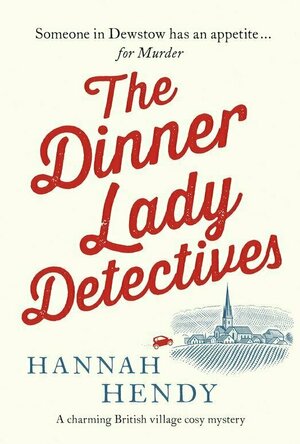
![Lost Graves (Boyle & Keneally #2) [Audiobook]](/uploads/profile_image/317/9e668096-6135-4694-b257-30976a5be317.jpg?m=1644157499)
